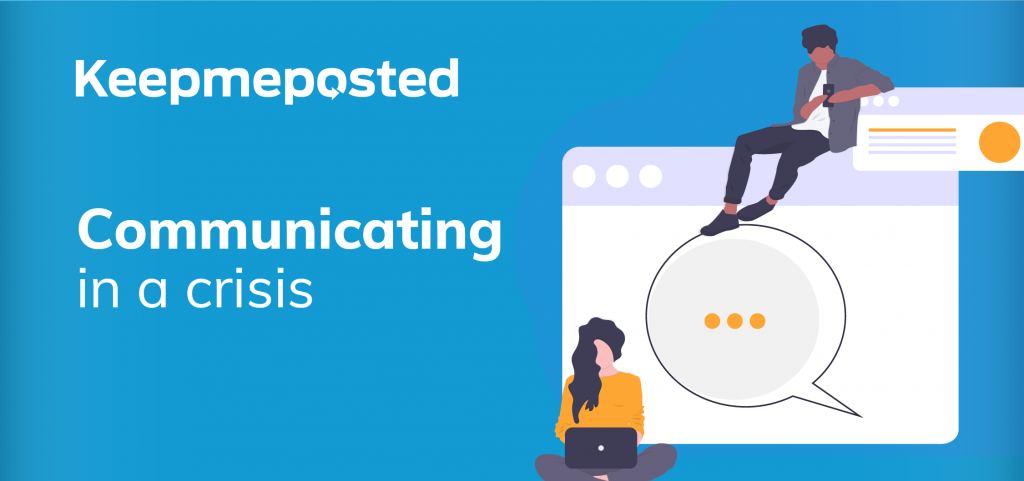This article is part of our ‘Covid-19 & the Job Market’ resource pack. View more here.
The coronavirus felt far away when it started and when it suddenly started getting closer and closer to home we finally started to believe this was getting serious and decisions had to be taken. Questions began to surmount. Should we start working from home? How will that work? Would we be able to go to the supermarket? Will the supermarkets run out of essentials? Our minds and everyone else’s started racing. Too many questions that no one knew the answers to. In the face of so many questions and unknowns – the need to communicate through a crisis is still there. You need to communicate with your employees and your employer – your stakeholders, your clients, your audience and the public.

So how would you communicate through a crisis?
Set up a team
If you’re part of a big organisation – set up a crisis response team. This team will be a centralised information depot. As the only source of information this team will make sure to answer all questions and handle problems and issues that may come in an emergency. Too many sources of information could lead to mixed messages. This team should make your company look human and the problem in good hands. In this case, no one really knows what’s going to happen tomorrow which means that honesty should be your best policy. Everyone knows this is not in your hands – so being transparent about it and showing all your cards can only win you brownie points. Understand where anxiety may be coming from. Put yourself in your constituents’ shoes. As part of its business continuity practise, Intel has a standing pandemic leadership team. Any crisis textbook would tell you to communicate early and often – even if what you need to say is ‘We don’t know.’ Above all else, do not hide bad news in times of crisis.
Communicate with employees
Employees are your ambassadors. If your employees feel lost and confused it will reflect in their work and this will reflect back on your company. Provide timely information as you acquire it and outline clear policies on how things will be handled. Send updates regularly and keep your employees in the loop. The more involved your employees are, the more they will feel a sense of belonging and agreement to all this.
Communicate with clients
Your clients want to know what’s happening. Be a leader and show that you’re being proactive in such a crisis. How will your approach change? Will you still be offering the same service or will you differentiate to cater for their (presently) different needs and requirements. Priorities for your customers have definitely changed, and they will appreciate that you’re empathetic to their needs. When this is over, be sure that they will remember who helped and who didn’t.
Social responsibility has taken on a new dimension
Now is the time to associate your brand with good. Essential to healthy brand communication, your handling of this crisis and how you reply to customers’ queries will have good or bad consequences in the future. Now is the time to talk to talk. Many promote their values. Now is the time to show you really care. What are you doing to help? Was your usual ‘social responsibility’ reflected in the way you handled the situation? How empathetic were you with your employees? What good can came out of this? Reflect on how you can help and communicate it. It may inspire others (and potentially motivate customers).
Have a crisis communication plan in place
Since pandemics or emergencies rarely come with a fair warning it is crucial that you have a crisis communication plan in place as this will save you time and worry when emergencies happen. We all know too well now, that they do happen. This means having a communication hierarchy, a social media strategy, a key spokesperson, and a Plan B.
All in all, transparency and timeliness is key. An effective reaction could save your business and perhaps even open new windows of opportunity you never thought possible.
Tag a friend or colleague who needs to read this.


